Carnegie Public Library, Huntington, West Virginia
Introduction
Text-to-speech Audio
Images
The library was built in 1902-1903 and was designed in the Beaux Arts style, a popular format for Carnegie libraries and public buildings in general during the early twentieth century.
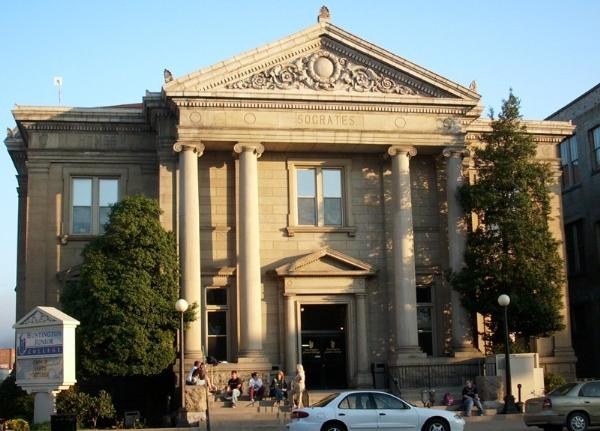
Exterior of the former library today
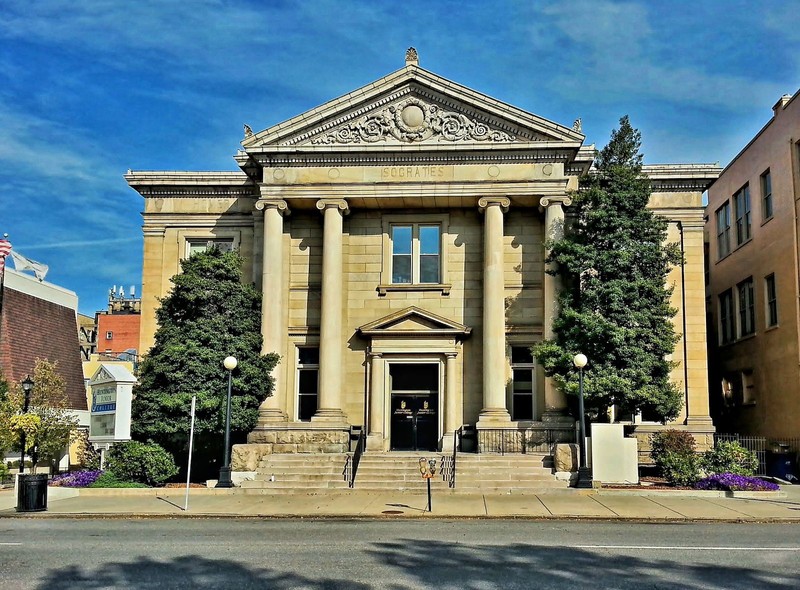
The library sometime before 1915; note the presence of a Civil War statue, which mysteriously disappeared by that year.
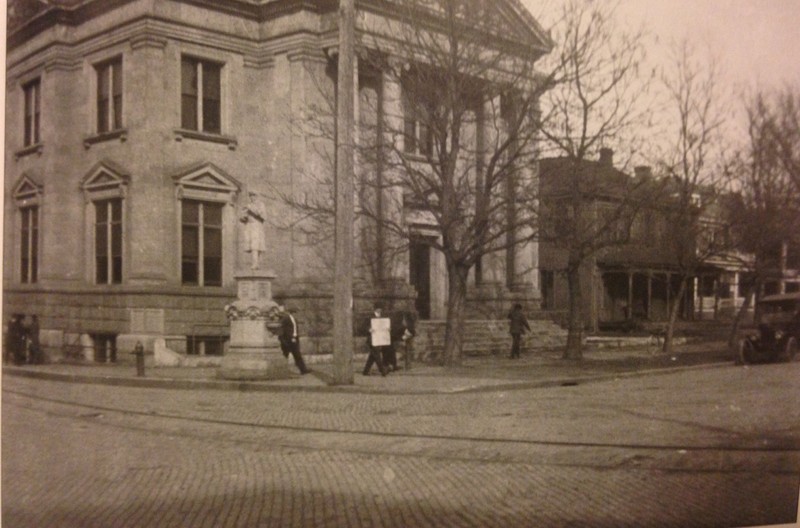
The library circa 1904
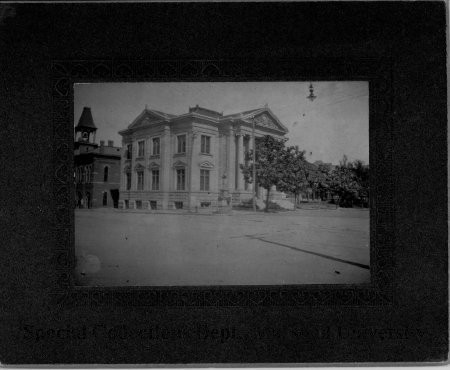
Postcard of the library from 1909
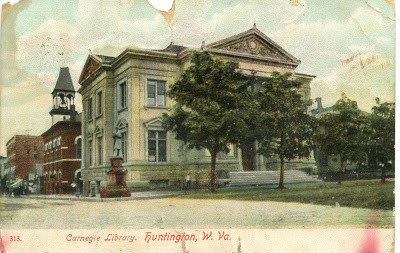
Bird's eye view of downtown Huntington circa 1910, with the library in the foreground
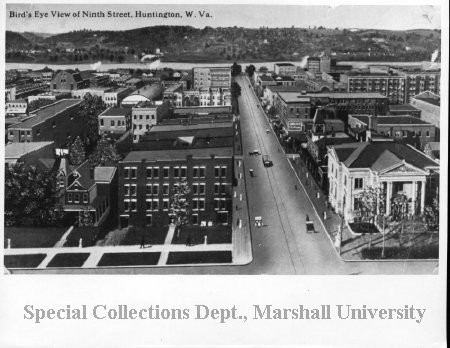
Postcard of the library from 1911
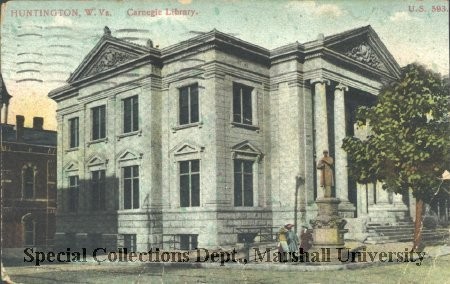
Postcard of the library, circa 1916
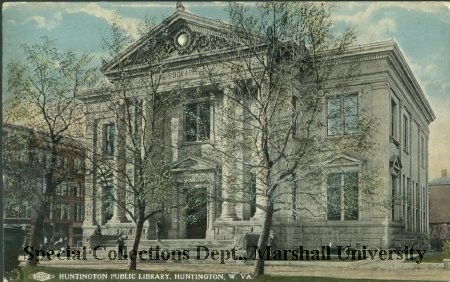
Postcard showing the library in 1929
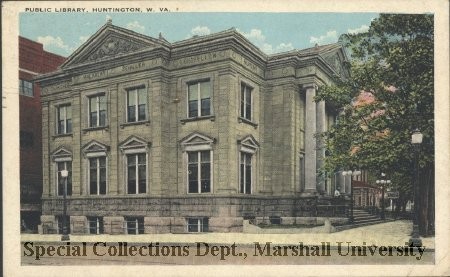
Photo of the library, circa 1930
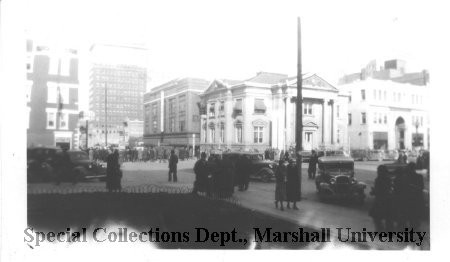
Backstory and Context
Text-to-speech Audio
Scottish-American industrialist Andrew Carnegie (1835-1919) became one of the richest men in history thanks to the enormous success of his Carnegie Steel Company. Early on he expressed a great interest in philanthropy, and he strongly advocated that the wealthy should give away the fortunes they had accumulated. By the end of his life Carnegie had donated the majority of his wealth to various charitable causes, libraries in particular. Carnegie credited access to a free library during his childhood as one of the main reasons for his success, and he wanted to make knowledge as widely available as possible. From 1883 until his death in 1919 Carnegie provided grants for the construction of around 2,800 free, public libraries around the world, including 1,700 in the United States.
Carnegie offered grants for eight communities in West Virginia: Wheeling, Huntington, Parkersburg, Bethany College, Hinton, Bluefield, Williamson, and Charleston. However, he stipulated that communities had to be able to contribute ten percent of the construction cost annually for continued maintenance of a library, and they had to provide property for it to be located on. Because of these stipulations only Huntington, Hinton, Parkersburg, and Bethany College accepted the grant. Huntington was initially offered $25,000 for a library, which was soon increased to $35,000. The city government provided a plot of land on the corner of Ninth Street and Fifth Avenue, an area known at the time as Government Square, and ownership was conveyed to the local Board of Education. Construction of the Carnegie Public Library, as it was named, began in the spring of 1902. It was completed by December 1903 and opened in a grand ceremony on January 1, 1904. Adrianne Burns was hired to serve as the first librarian.
Huntington architect James B. Stewart designed the library, which was created in the Beaux Arts Classical style; this was similar to many other Carnegie libraries. Features included a large basement, Ionic columns, terra cotta ornamentation, and stone ashlar walls. The names of several literary and classical figures, such as Socrates, were carved at the top of the building. The library started out with 750 books but grew quickly; by 1908 it had 6,000 volumes in its possession. The building’s interior was renovated in the 1930s to accommodate this growth, with the changes overseen by architect Albert F. Tucker.
The Carnegie Public Library was added to the National Register of Historic Places in 1980. That same year it closed upon the completion of the new and larger Cabell County Public Library directly across the street. Soon afterwards the old building was repurposed to house Huntington Junior College, which left much of the original interior intact. The for-profit college was established in 1936 by Chester A. Riley Jr., who wanted to provide students with job skills relevant to Huntington’s industries. The school originally offered courses in skills such as bookkeeping, shorthand, and typing. Today it operates eight Associate’s Degree programs ranging from business management to medical coding.
Sources
“A History of US Public Libraries.” Digital Public Library of America. Accessed May 31, 2019. https://dp.la/exhibitions/history-us-public-libraries/carnegie-libraries.
Andrews, Evan. “Andrew Carnegie’s Surprising Legacy.” History.com. August 29, 2018. Accessed May 31, 2019. https://www.history.com/news/andrew-carnegies-surprising-legacy.
“History.” Huntington Junior College. Accessed May 31, 2019. http://www.huntingtonjuniorcollege.edu/About/History.aspx
Julian, Charles A. “Carnegie Libraries.” e-WV: The West Virginia Encyclopedia. January 25, 2012. Accessed May 31, 2019. https://www.wvencyclopedia.org/articles/970.
McMillan, Don Daniel. Images of America: Huntington. Charleston, SC: Arcadia Publishing, 2003.
Pauley, Michael J., and Rodney S. Collins. “Carnegie Library.” National Register of Historic Places Nomination Form. July 30, 1979. Accessed May 31, 2019. http://www.wvculture.org/shpo/nr/pdf/cabell/80004015.pdf.
Stamberg, Susan. “How Andrew Carnegie Turned His Fortune Into a Legacy.” NPR. August 1, 2013. Accessed May 31, 2019. https://www.npr.org/2013/08/01/20727849/how-andrew-carnegie-turned-his-fortune-into-a-library-legacy.
https://commons.wikimedia.org/wiki/File:Carnegie_Public_Library_2012-10-14_15-18-12.jpg
https://marshall.pastperfectonline.com/photo/A561E1E3-12DB-42B5-9120-032758965407
http://librarypostcards.blogspot.com/2011/05/1909-carnegie-library-huntington-west.html
https://marshall.pastperfectonline.com/photo/690F4120-4C25-4D06-BBAE-244543470110
https://marshall.pastperfectonline.com/photo/0BBA9469-E047-473F-A146-944033326419
https://marshall.pastperfectonline.com/photo/9EE62752-6D52-46E0-9305-375528055318
https://marshall.pastperfectonline.com/photo/8B998F0D-A34C-4083-A149-526888554640
https://marshall.pastperfectonline.com/photo/31EBB3A5-1CD5-45BC-A98E-437538083940
